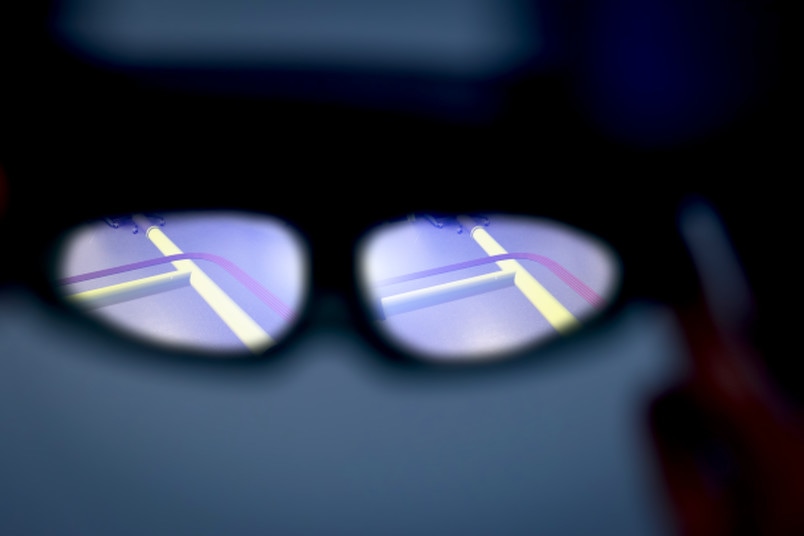Oct 31 2019
Augmented Reality (AR) applications might considerably simplify maintenance and repair operations as technicians could use smart goggles to navigate to a specific location, where the glasses then specify the vital tasks one step at a time.
 Digital manuals displayed by smart glasses might one day replace traditional paper manuals. (Image credit: © Roberto Schirdewahn)
Digital manuals displayed by smart glasses might one day replace traditional paper manuals. (Image credit: © Roberto Schirdewahn)
For this to be successful, the devices must be in a position to compute their precise position in the room and perceive what they are observing at any specified time.
At the Chair of Computing in Engineering in Bochum, the team led by Professor Markus König is creating algorithms that make all this achievable without the need for any manual calibration. Rubin, the science magazine from Ruhr-Universität Bochum, has published a report detailing that project.
The algorithm developed in Bochum needs a digital building model. It carries out a comparison of the image recorded by the smart glasses with the model. To achieve that, the person using the glasses must only turn around once in the room, so as to provide the glasses with a lot of visual information on their surroundings as possible.
The algorithm works to rotate and shift the digital model until it overlaps with the surroundings. If required, it performs this task one pixel at a time; depth information like those recorded by contemporary cameras is very useful in the process.
Manual Calibration Required in the Past
Conventional techniques have necessitated manual calibration, which is realized with the help of at least two dots applied at distinct points in the room and recorded in a digital model: as soon as the user with the smart glasses enters the room, he must input the information related to the position of dots into the system, in order for it to compute his 3D position in the room.
Using their algorithm, the Bochum scientists can automatically establish the position of the glasses in the room, as well as in the whole building. In order to use the manual dot calibration technique, the user will have to recalibrate the glasses often or he will have to use a large number of dots.
Optimization for Lower Computational Power
At present, the accuracy of automated calibration is 20 cm, which is sufficient to navigate through a room. For other applications, the Bochum scientists plan to enhance the algorithm.
One of the team’s core issues is to make sure that the algorithm runs automatically and in real time—as it already does when used on a smartphone. However, the computational power of smart glasses is lower than that of phones, implying that the efficiency of the application has to be upgraded in order to work effortlessly.